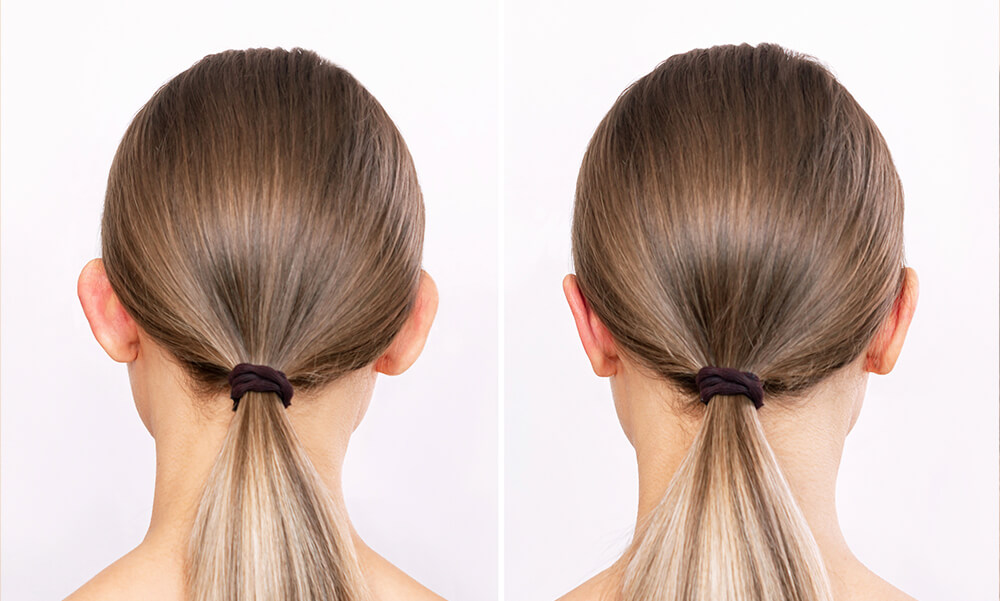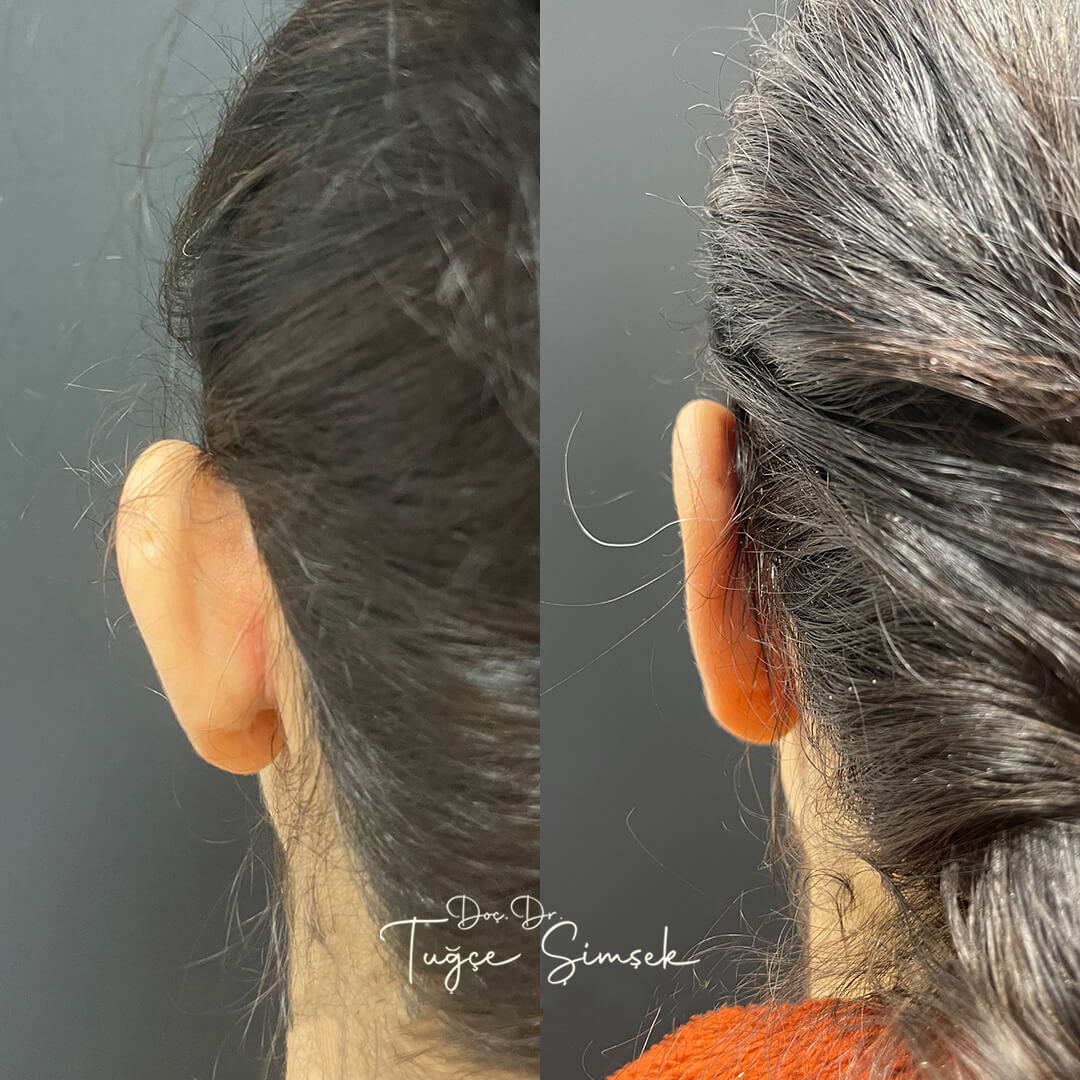
Ear aesthetics, also known as otoplasty, is an operation that can be performed on people who are not satisfied with their ear appearance and have ear deformities. Ears are among the most striking organs in the upper parts of the body. The appearance of the ears extending outwards or upwards can cause discomfort to many people. Although it does not cause a health problem, deformed ears can cause problems with their psychological effects. It can present a psychologically disturbing appearance, especially for children at an early age. In these cases, otoplasty procedures are applied to give the ear an aesthetic appearance and different methods can be preferred. Ears continue to develop until the age of 6. After this development period, ear aesthetic operations can be performed at an early age.
What is Ear Aesthetics?
The question of what is ear aesthetics can be answered briefly as an aesthetic operation performed to give the ear an aesthetic appearance and to intervene to make it less visible. In this process, the ear cartilages are shaped. In other words, it is aimed to give the ears a more backward shape. In this way, prominent ears or ears that have a much larger appearance than normal gain a more aesthetic appearance. It is one of the surgical procedures that can be applied regardless of gender and age. It can be performed on children over 6 years of age, that is, all children whose ear development has been completed.
Who Can Have Ear Aesthetics?
Ear aesthetics can be applied in many cases. This aesthetic operation is generally preferred by people who have a congenital prominent ear appearance. So, what is prominent ear? If the ears have a steeper appearance than they should be and extend outward in this way, they are called prominent ears. This condition is even known as prominent ear deformity. This condition, which can be encountered in a large part of the society, does not cause health problems. However, its psychological effects are quite high. With prominent ear aesthetics, large and erect ears can be given a normal appearance.
Otoplasty can also be applied to people with a large conchal chamber. The large cartilage that forms the back of the ear is called conchal. If this cartilage is larger than usual, it means that the ear has a much larger appearance than normal. In order to get rid of this more protruding appearance, otoplasty is performed and the cartilage tissue is cut and reduced in size.
One of the situations where ear aesthetics should be applied is the absence of an antihelical fold. There are two different cartilages in a normal ear. One curves outward and the other curves inward. The inward fold is called antihelical. If the antihelical fold is absent or flat, the ear appears much larger than it is. Otoplasty is needed to eliminate this situation and to improve the ear aesthetically by organizing the folds.
Otoplasty is not only performed to make large ears smaller. It can also be applied for very small ears to have an average size and to be shaped accordingly. Another situation where ear aesthetics is applied is the elimination of deformations in the ear as a result of injury. Ear aesthetic surgery can be performed when there is a change in the ear structure due to trauma.
How is Ear Aesthetics Performed?
Answers are sought to many questions such as whether ear aesthetics is difficult, how the surgery is performed, and what is the healing process. The answers to these questions vary according to the reasons for ear aesthetics and the patient’s condition. Prominent ear aesthetics is generally an operation performed under local anesthesia. However, general anesthesia is definitely preferred for young children.
There are different methods that can be preferred in ear aesthetic surgeries. Different ways can be preferred according to the appearance of the ear and the desired aesthetic appearance. During the surgery, the patient’s age group and similar issues are also effective. For example, cartilages have a soft structure at an early age, that is, during childhood. Since the cartilages are soft, it is sufficient to shape these structures only with stitches. However, this method is generally not preferred in adult patients. Especially in surgeries where the large conchal chamber needs to be reduced, some of the cartilages are cut out. In addition to these, it can also be shaped by weakening only the cartilage structures. During these operations, surgeries are performed by making incisions in the ear. Stitches are not visible from the outside. The question of whether there is a scar in ear aesthetics can be answered in this way.
Ear Aesthetic Surgery Process
Necessary examinations and interviews are conducted before ear aesthetic surgery. Since it is a surgical procedure, it is first evaluated whether the patients are suitable for this procedure. Then, after evaluating the ear structure and the desired aesthetic appearance, the necessary plans are made. In the preoperative process, doctors should be informed about regularly used medications and chronic conditions. Although it is among the low-risk surgery groups, it is important to take all precautions before the surgical procedure and manage the process in this way.
It is also wondered how long ear aesthetics, i.e. otoplasty, is a procedure. It is said that these operations take an average of 3 hours. Depending on the difficulty of the operation, this time may be longer or shorter. For example, while operations to reduce the conchal structure take a long time, other cartilage bonding procedures may take much less time.
After the operation is completed and about 2 days have passed, patients can return to their normal lifestyle. It is usual to feel mild pain and swelling after the operation. However, the complaints will subside in a short time. In case of excessive pain, a specialist doctor should be consulted. This process is controlled by specialist doctors with painkillers and similar supportive medications.
After the ear aesthetic operation, the ears may remain bandaged for a few weeks. If non-absorbable stitches were not used during the operation, the stitches are removed after about a week. However, the stitch removal time and the duration of bandage use may vary depending on the patient’s condition. It is possible to remove the bandages after an average of 2 weeks.
In the postoperative period, the ears should be protected from traumas and accidents for a long time. Care must be taken not to be hit and pulled. Protective bandages should be used during sleep, taking into account the doctor’s recommendations. It is also recommended to use headbands. After the surgery, hair bands are used during sleep for long-term protection. The issue of whether ear aesthetics is permanent is also a subject of research. All surgical procedures performed for the aesthetic appearance of the ear are completely permanent. However, attention should also be paid to the issues to be considered after surgery. It is necessary to be careful during the complete healing process of the ears.
Ear Aesthetic Prices
Ear aesthetic prices are an issue that may vary according to many situations. One of the first issues affecting the prices is the health institution where the operation is performed and the facilities available. Another important issue is the materials and techniques used during surgery. The operation process planned according to the patients is also among the issues that affect the prices. Otoplasty prices are determined after the expectations of the patients are understood, after the examination and planning. Therefore, it will not be possible to reach a clear price information.


 +90 532 290 86 28
+90 532 290 86 28